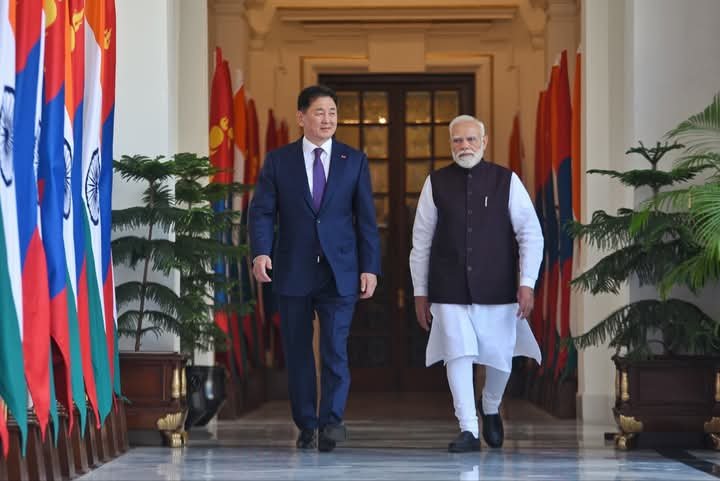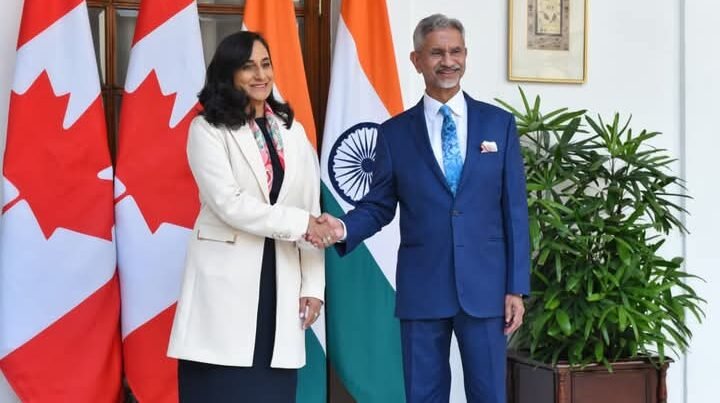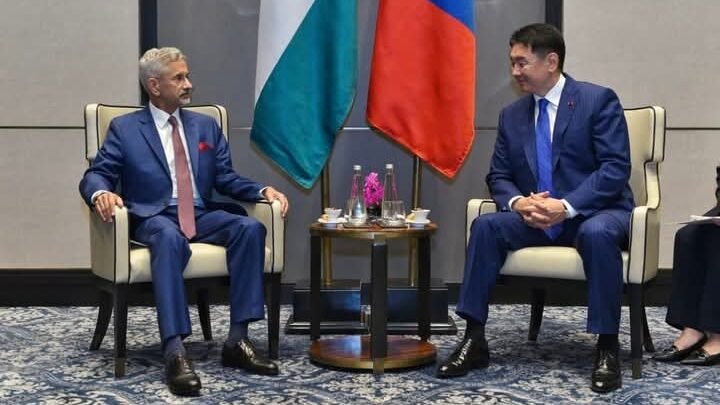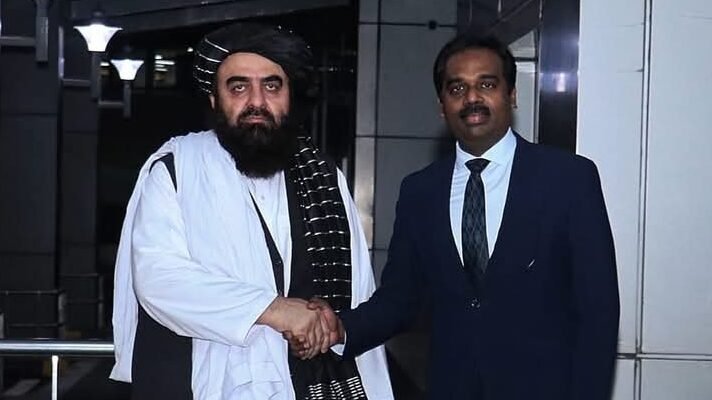
India Launches Border Security Programme for Mongolia, Signs Key MoUs on Minerals and Humanitarian Aid
New Delhi – In a significant boost to bilateral ties, Prime Minister Narendra Modi on Monday launched a comprehensive capacity-building programme for Mongolia’s border security forces and oversaw the signing of 10 memorandums of understanding, including crucial agreements on mineral resources and humanitarian assistance.
The announcements came during a state visit by Mongolian President Khurelsukh Ukhnaa from October 13-16, marking 70 years of diplomatic relations and a decade of strategic partnership between the two nations.
Border Security Cooperation Takes Centre Stage
Speaking at a joint press conference on October 14, PM Modi unveiled plans for a new training initiative targeting Mongolia’s General Authority for Border Protection. The programme aims to enhance capabilities in border patrol operations, counter-insurgency tactics, and navigation of challenging terrain.
“Our defence cooperation is growing stronger,” Modi said, noting that collaboration between India’s Border Security Force and Mongolian border personnel has been ongoing for the past eight years.
The initiative will expand existing training programmes and includes the appointment of a defence attaché in Ulaanbaatar. Given Mongolia’s strategic location between Russia and China, the security partnership represents a cornerstone of what both nations refer to as the “Third Neighbour” policy – India’s unique approach to engaging with Mongolia despite sharing no physical borders.
Critical Minerals Agreement Addresses Strategic Needs
Among the most significant agreements signed was an MoU on geology and mineral resources, positioning India to access Mongolia’s vast reserves of critical minerals including uranium, coal, copper, gold, and zinc.
The partnership addresses mutual strategic interests: India gains access to essential minerals for its growing economy and technology sector, while Mongolia reduces its heavy dependence on China, which currently accounts for 70-80% of its exports.
India has committed to increasing imports of coking coal from Mongolia, with shipments planned through the Vladivostok-Chennai maritime corridor. The agreement also covers crude oil prospecting and mineral exploration activities.
“Mongolia has abundant mineral resources, and we are ready to work with Indian companies,” President Khurelsukh said during the visit.
Humanitarian Aid Framework Established
A separate MoU on humanitarian aid and assistance establishes protocols for cooperation during disasters, natural calamities, and pandemics. The framework draws on India’s experience with COVID-19 response protocols and immunity-boosting medicines, aiming to help Mongolia reduce its dependence on external sources for health and energy security.
Comprehensive Partnership Deepens
The visit produced eight additional agreements spanning cultural exchange, immigration cooperation, digital solutions sharing, and cooperative promotion. Notably, a cultural cooperation pact was signed between Ladakh’s Autonomous Hill Development Council and Mongolia’s Arkhangai province, reflecting the Buddhist heritage shared by both regions.
In a symbolic gesture honouring their spiritual bonds, India announced it would send sacred relics of Lord Buddha’s disciples Sariputta and Maudgalyayana to Mongolia in 2026. The two leaders also planted a banyan tree under the “Ek Ped Maa Ke Naam” (A Tree in Mother’s Name) initiative, with President Khurelsukh dedicating the sapling to his mother’s memory.
Economic Ties and Development Projects
India’s $1.7 billion line of credit is financing the Dornogovi oil refinery project, described as India’s largest overseas development initiative. Expected to become operational by 2028, the project involves 2,500 Indian specialists and represents a tangible commitment to Mongolia’s energy independence.
Bilateral trade, currently standing at $35.3 million, remains modest but is expected to grow substantially through the new mineral resource partnership and enhanced connectivity.
Strategic Alignment and Global Cooperation
Both nations reaffirmed their commitment to a rules-based Indo-Pacific order and pledged to amplify the voices of the Global South in international forums. Mongolia reiterated its support for India’s bid for permanent membership in the UN Security Council.
“Our borders may not be connected, but Mongolia is our neighbour. This relationship is not merely diplomatic; it is a spiritual bond,” Modi said, referencing the ancient Buddhist connections between the two civilizations dating back to the 13th century.
Looking Ahead
To facilitate people-to-people exchanges, India announced free e-visas for Mongolian citizens. The Indian Council for Cultural Relations will host eight Mongolian students for a youth orientation programme, while a Sanskrit teacher will be deputed to Gandan Monastery for one year. Additionally, 70 scholarships under the Indian Technical and Economic Cooperation programme have been allocated for Mongolian students.
A commemorative postage stamp was released to mark the 70th anniversary of diplomatic relations, and both sides agreed to review progress at the next Intergovernmental Commission meeting.
As both nations navigate complex geopolitical landscapes, this visit has reinforced their commitment to what Modi described as an “all-round partnership” – one rooted in ancient spiritual ties but oriented firmly toward addressing 21st-century challenges in security, sustainability, and strategic autonomy.



